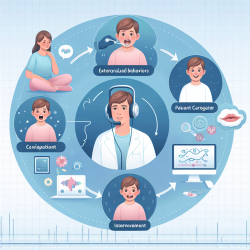Introduction
Environmental Tobacco Smoke (ETS), commonly known as passive smoke, has been identified as a significant environmental risk factor, particularly for vulnerable groups such as children. The study "Exposure to Environmental Tobacco Smoke in Relation to Behavioral, Emotional, Social and Health Indicators of Slovak School Children" provides critical insights into how ETS affects the health and behavior of children aged 6-15 years in Slovakia. This blog aims to help practitioners enhance their skills by implementing the findings of this research or encouraging further exploration in this area.
Key Findings of the Study
The study examined 1,478 Slovak school children, utilizing tools such as the Columbia Impairment Scale (CIS) and the Behavior Problem Index (BPI) to assess emotional and behavioral functions. Key findings include:
- A significant association between ETS exposure and higher prevalence of respiratory diseases.
- ETS exposure correlates with poorer eating habits, increased sedentary activities, and higher rates of overweight/obesity.
- Social factors, such as family income and completeness, significantly impact children's behavioral and emotional health.
Implementing Research Findings in Practice
Practitioners can leverage these findings to improve their interventions and support for children exposed to ETS:
- Educate Families: Raise awareness among parents about the detrimental effects of ETS on children's health and encourage smoke-free environments at home.
- Promote Healthy Lifestyles: Encourage physical activities and balanced nutrition to counteract the sedentary lifestyle and poor eating habits associated with ETS exposure.
- Address Social Factors: Consider socio-economic factors when designing interventions, as these significantly influence children's health outcomes.
Encouraging Further Research
The study highlights the need for further research to understand the complex interactions between ETS, social factors, and children's health. Practitioners are encouraged to participate in or support research efforts that explore these dynamics more deeply, potentially leading to more effective interventions and policies.
Conclusion
ETS remains a critical public health issue, particularly for children in vulnerable socio-economic situations. By implementing the findings of this study, practitioners can play a vital role in mitigating the adverse effects of ETS on children's health and well-being. For those interested in delving deeper into this research, the original paper can be accessed here.










